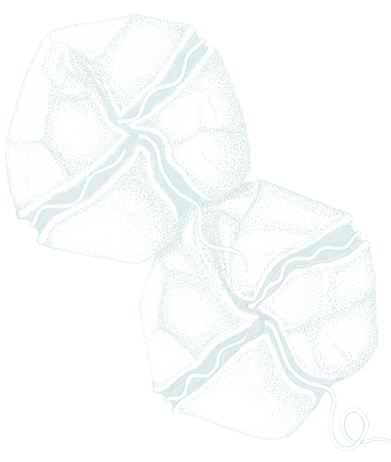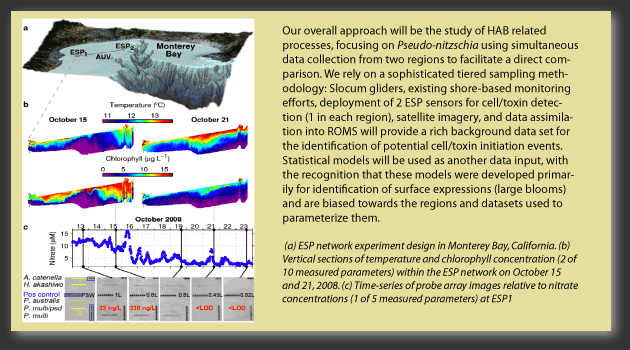As part of a 5-year effort funded through NOAA’s Ecology and Oceanography of Harmful Algal Blooms (ECOHAB) Program, the project "A Regional Comparison of Upwelling and Coastal Land Use Patterns on the Development of HAB Hotspots Along the California Coast" was initiated in 2011.
California represents approximately 1,000 miles of the Pacific coastline of the U.S. and major fractions of the coastal economy and environmental resources of our nation.
Alarmingly, blooms of harmful and toxic algae have increased in frequency and severity along this coast during the past few decades. Although several HAB organisms are present, Pseudo-nitzschia (domoic acid poisoning) is rapidly becoming the single greatest threat and problem for human and ecosystem health, potentially eclipsing paralytic shellfish poisoning (PSP) in severity due to the diverse impacts on the economy through commercial fisheries and tourism, as well as via direct impacts on marine birds and mammals.
Our primary objective is to develop a better understanding of the ecophysiological conditions leading to bloom and toxin initiation for Pseudo-nitzschia, by simultaneously comparing two “hot spots”, Monterey Bay and San Pedro, California.
Click here for project hypotheses
Click here for project publications
HAB Hotspots Partners:
University of California Santa Cruz
Jet Propulsion Laboratory/UCLA
Monterey Bay Aquarium Research Institute
Moss Landing Marine Laboratory
Southern California Coastal Waters Research Project
University of Southern California



